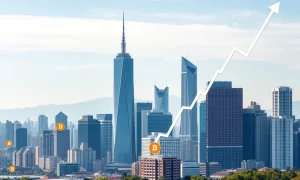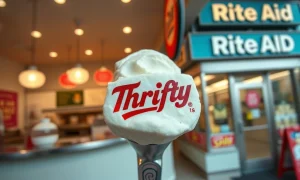The retail landscape is constantly evolving. However, recent news has sent ripples through the industry. Another popular **fashion retailer closing** all its US stores marks a significant event. This abrupt decision affects numerous employees and communities nationwide. Many consumers wonder about the underlying reasons for such a widespread shutdown. Understanding these factors is crucial for anyone interested in the future of commerce and economic trends.
Understanding the Trend: Why is a Fashion Retailer Closing?
The sudden announcement of a major **fashion retailer closing** all its US operations highlights ongoing challenges within the retail sector. Several key factors contribute to such drastic decisions. Firstly, increased competition from online retailers plays a significant role. Consumers increasingly prefer the convenience of shopping from home. Secondly, changing consumer preferences impact sales. Shoppers now prioritize sustainability, value, and unique experiences over traditional brick-and-mortar offerings. Thirdly, economic pressures like inflation and reduced discretionary spending affect purchasing power. Finally, high operational costs, including rent and labor, become unsustainable for many physical stores.
This particular **fashion retailer closing** is not an isolated incident. We have seen similar trends across various segments of the retail market. Businesses must adapt quickly to survive. Failure to innovate often leads to insolvency. This situation underscores the urgent need for retailers to rethink their strategies. They must embrace digital transformation and customer-centric approaches.
The Broader Impact of a Fashion Retailer Closing All US Stores
When a prominent **fashion retailer closing** occurs, the effects extend far beyond the company itself. Thousands of jobs are immediately at risk. This impacts families and local economies directly. Furthermore, the closure leaves vacant retail spaces in malls and shopping centers. These empty storefronts can reduce foot traffic for neighboring businesses. They also create a less vibrant commercial environment. Landlords face challenges in finding new tenants, leading to potential revenue losses. The ripple effect touches various stakeholders:
- Employees: Job displacement, loss of income, need for retraining.
- Landlords: Vacant properties, reduced rental income, property value depreciation.
- Suppliers: Loss of a major client, potential inventory surplus.
- Local Communities: Reduced tax revenue, fewer shopping options, potential decline in economic activity.
This event also sends a strong signal to other retailers. It emphasizes the volatility of the current market. Businesses must prepare for rapid shifts in consumer behavior and economic conditions. Proactive measures are essential for long-term viability.
Navigating the Digital Shift: A Key Challenge for Fashion Retailers
The digital revolution has fundamentally reshaped the retail industry. For any **fashion retailer closing** its physical stores, the inability to effectively pivot to e-commerce is often a major contributing factor. Online shopping offers unparalleled convenience. Customers can browse vast selections, compare prices easily, and receive items directly at their doorstep. Many traditional retailers struggled to build robust online platforms. They failed to integrate their digital and physical presences seamlessly. This omnichannel gap proved detrimental for some.
Moreover, digital marketing and social media engagement are now critical. Retailers must connect with consumers where they spend their time. This means platforms like Instagram, TikTok, and Pinterest. Brands need to create engaging content and foster online communities. A strong digital presence is no longer optional. It is a prerequisite for survival in today’s competitive market. Companies that neglect this aspect often fall behind. They lose market share to more agile, digitally-native competitors.
Economic Headwinds and Consumer Spending Habits
Current economic conditions present significant hurdles for retailers. High inflation rates reduce consumers’ purchasing power. People have less disposable income for non-essential items like fashion. This directly impacts sales volumes for clothing and accessories. Furthermore, rising interest rates make borrowing more expensive for businesses. This affects their ability to invest in growth or manage existing debts. Consumers are also becoming more cautious with their spending. They prioritize necessities over luxury goods. This shift in spending habits directly pressures the fashion sector. Retailers must offer compelling value propositions to attract buyers.
The overall economic outlook plays a crucial role in retail performance. Periods of uncertainty often lead to reduced consumer confidence. This translates into decreased spending. A **fashion retailer closing** reflects these broader economic pressures. It underscores the fragility of businesses heavily reliant on discretionary consumer spending. Understanding these macroeconomic trends is vital for predicting future retail performance.
The Future of Retail: Adapt or Perish
The closure of this popular **fashion retailer closing** serves as a stark reminder. Retailers must adapt quickly to changing market dynamics. The future of retail lies in innovation and agility. Successful brands are embracing new business models. They are focusing on personalized customer experiences. Furthermore, they invest in technology to enhance efficiency. This includes everything from supply chain optimization to in-store digital tools. Retailers are also exploring smaller, more experiential physical footprints. These spaces often serve as showrooms or pickup points for online orders. This hybrid approach combines the best of both worlds.
Sustainability and ethical practices are also becoming increasingly important. Consumers, especially younger generations, care about a brand’s social and environmental impact. Retailers that align with these values often gain a competitive edge. Ultimately, survival depends on understanding the evolving consumer. Businesses must meet their needs and expectations in innovative ways. The retail landscape will continue to transform. Only the most adaptable will thrive.
Lessons Learned from a Fashion Retailer Closing
The news of this **fashion retailer closing** offers valuable insights for the entire industry. Firstly, relying solely on brick-and-mortar sales is no longer viable. A robust omnichannel strategy is essential. This means seamless integration between online and physical stores. Secondly, understanding your customer base is paramount. Consumer preferences are constantly shifting. Retailers must conduct continuous market research. They need to respond quickly to new demands. Thirdly, financial prudence and efficient operations are critical. High overheads can quickly sink a business during economic downturns. Fourthly, innovation is not optional. Embracing new technologies and business models ensures relevance. Finally, adaptability is key. The retail environment is dynamic. Companies must be prepared to pivot their strategies rapidly.
This event underscores a broader trend. The retail sector is undergoing a profound transformation. Businesses that learn from these closures can better position themselves for future success. It is a challenging time for many. However, it also presents opportunities for growth and reinvention for those willing to embrace change.
Reinventing the Retail Experience: Beyond Traditional Models
The traditional retail model faces unprecedented challenges. The news of a **fashion retailer closing** all US stores reinforces this. However, this period of disruption also fuels innovation. Many successful retailers are reimagining the customer experience. They are creating immersive in-store environments. These spaces offer more than just products. They provide unique experiences, workshops, or community events. Pop-up shops also gain popularity. These temporary installations create urgency and excitement. They allow brands to test new markets or concepts without long-term commitments. Subscription boxes offer personalized curation and convenience. This model builds customer loyalty through recurring value.
Technology plays a vital role in this reinvention. Augmented reality (AR) allows customers to virtually try on clothes. Artificial intelligence (AI) powers personalized recommendations. Data analytics helps retailers understand purchasing patterns. These tools enable a more tailored and efficient shopping journey. Retailers are also exploring partnerships and collaborations. They team up with complementary brands or local businesses. This expands their reach and offers fresh perspectives. The focus is shifting from transactional sales to building lasting relationships with consumers.
The Human Element: Supporting Workers Affected by Store Closures
Beyond the business implications, the human cost of a **fashion retailer closing** is significant. Thousands of employees face job loss. This creates immense personal and financial stress. Companies, where possible, should prioritize supporting their affected workforce. This includes offering severance packages, outplacement services, and job search assistance. Connecting employees with local job fairs or training programs can ease their transition. Government agencies and community organizations also play a role. They provide resources for unemployment benefits and career counseling. The broader economic impact of these closures often includes increased demand for social services. It is important for communities to prepare for these challenges. Supporting displaced workers is a crucial aspect of managing retail downturns. Their skills and experience remain valuable. Helping them find new opportunities benefits everyone.
Conclusion: A Shifting Landscape Demands Agility
The abrupt decision by a popular **fashion retailer closing** all its US stores serves as a powerful indicator. It highlights the profound shifts occurring within the retail industry. This event is not merely an isolated incident. Instead, it reflects broader trends. These include the rise of e-commerce, changing consumer values, and persistent economic pressures. Retailers must embrace innovation. They need to prioritize adaptability. Building strong digital presences is essential. Creating unique in-store experiences is also vital. Furthermore, understanding and responding to consumer needs is paramount. The future of retail belongs to agile businesses. These companies will continually evolve their strategies. They will focus on delivering exceptional value in a rapidly changing market. This challenging period also presents opportunities. New models will emerge. Ultimately, the industry will continue to transform. Only the most forward-thinking will thrive in this new era of commerce.
Frequently Asked Questions (FAQs)
1. Why are so many fashion retailers closing stores?
Many fashion retailers are closing stores due to increased online competition, changing consumer preferences, high operational costs, and broader economic pressures like inflation. Shoppers increasingly prefer convenience and value found online, while physical stores struggle with overheads.
2. What is the impact of a fashion retailer closing on the economy?
The closure of a fashion retailer can lead to significant job losses, increased vacant commercial real estate, reduced tax revenue for local communities, and decreased foot traffic for surrounding businesses. It also signals broader economic challenges within the retail sector.
3. How does e-commerce contribute to brick-and-mortar store closures?
E-commerce offers consumers convenience, wider selection, and often lower prices, drawing sales away from physical stores. Traditional retailers that fail to develop strong online presences or integrate their digital and physical channels struggle to compete effectively.
4. What can consumers expect from the retail industry in the future?
Consumers can expect a continued shift towards omnichannel shopping, where online and in-store experiences are seamlessly integrated. More personalized shopping, experiential retail spaces, and a greater focus on sustainability are also anticipated trends. Many retailers will prioritize value and unique offerings.
5. Are all physical retail stores doomed to close?
No, not all physical retail stores are doomed. Successful brick-and-mortar retailers are adapting by creating unique in-store experiences, offering personalized services, using technology to enhance shopping, and integrating seamlessly with their online channels. Physical stores that provide a compelling reason for customers to visit can still thrive.
























